When we think of baking, sugar is one of the first things that comes to mind. But it’s not just there to add sweetness. The importance of sugar in baking goes way beyond that. It’s like a secret helper that makes cakes rise high, gives cookies their golden color, and even helps pastries stay fresh for longer. Without sugar, baking just wouldn’t be the same. So, as we look deeper into this sweet topic, we’ll discover all the amazing things sugar does in our favorite baked goods.
Affiliate Disclosure: Some of the links below are affiliate links, meaning at NO additional cost to you, I may earn a small commission if you click through and make a purchase. Full Disclosure
A Bit About Sugar’s History

Sugar has a long and sweet story. Let’s take a quick trip back in time to see where it all started:
- The Early Days: Sugar comes from a plant called sugarcane. Long ago, people in places like India and Southeast Asia started growing it. They chewed on sugarcane because it was sweet and juicy.
- Traveling Sugar: As people moved and traded things, sugar began to travel too. It went to places like the Middle East and then to Europe. At first, only rich people in Europe had sugar because it was rare and expensive.
- Growing More Sugar: Because so many people wanted sugar, big farms called plantations were set up in faraway lands. But there’s a sad part to this story. Many of these farms forced people to work without pay.
- Sugar for Everyone: Over time, more and more sugar was made, and it wasn’t just for rich people anymore. Everyone could have it! People also found out how to get sugar from other plants, like beets.
- Sugar Today: Now, sugar is everywhere! We use it in so many foods and drinks. There are different kinds of sugar, but they all make things taste sweet.
So, that’s how sugar went from being a special treat for a few to something we all enjoy today.
Why Do We Use Sugar in Baking?
More Than Just Sweetness
At first glance, sugar might seem like a simple sweetener, but its role in baking is multifaceted and important. Here’s a closer look at how sugar does so much more than just sweeten our treats:
- Flavor: Sugar isn’t just about adding sweetness. It helps bring out and balance other flavors in a dish. For instance, in a chocolate cake, sugar can reduce the bitterness of cocoa, making the chocolate taste richer and more pronounced.
- Texture: Sugar plays a big part in the texture of baked goods. In cookies, it can make them crisp or chewy. In cakes, it helps create a tender crumb. The way sugar interacts with other ingredients, especially fats like butter, can determine the final texture of your dessert.
- Color and Caramelization: When sugar is heated, it caramelizes, leading to a beautiful golden-brown color. This caramelization not only affects the color but also introduces a depth of flavor. Think of the crust on a creme brûlée or the golden edges of a cookie.
- Moisture Control: Sugar has a unique ability to hold onto water, which means it can help keep baked goods moist. This is why cakes or muffins with a higher sugar content often feel moister and have a longer shelf life.
- Leavening: In recipes where sugar is creamed with butter, it helps trap air. As the dessert bakes, this air expands, helping the baked good rise. This is especially important in recipes like pound cakes.
- Preservation: Sugar acts as a preservative, extending the shelf life of many baked goods. Jams and jellies, for instance, rely on sugar not just for sweetness but also to preserve the fruit’s freshness.
Understanding the many roles that sugar is capable of doing helps bakers use it more effectively, ensuring that desserts are not just sweet, but also have the right texture, color, and shelf life.
Different Sugars for Different Jobs

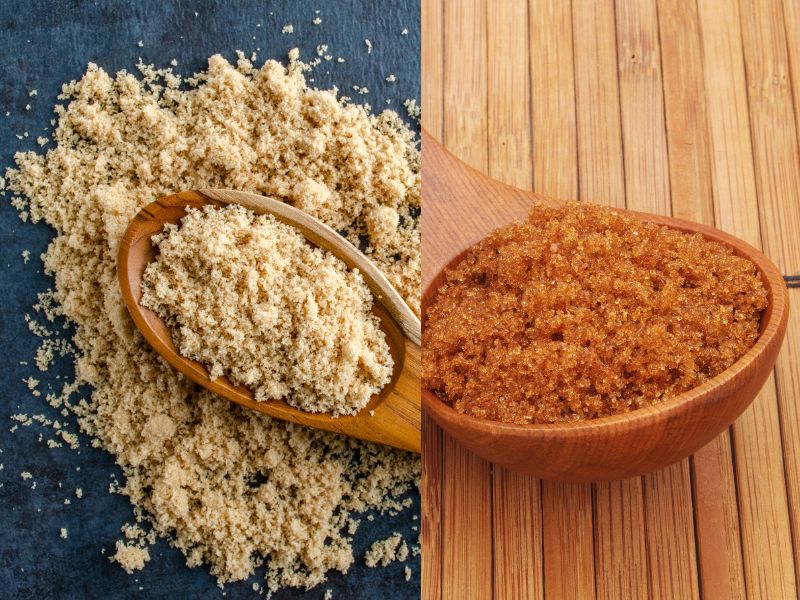

Sugar isn’t a one-size-fits-all ingredient. Depending on the type, it can bring unique flavors, textures, and characteristics to your baked goods. Let’s explore the different sugars and how they shine in the baking world:
White Sugar
Often called granulated sugar, this is the most common type you’ll find in kitchens. Taste & Texture: It has a neutral sweetness, making it versatile for almost any recipe.Best For: Basic cookies, cakes, and pastries. It helps in giving a consistent texture and even sweetness. Fun Fact: When creamed with butter, white sugar helps introduce air into batters, making cakes light and cookies crisp
Brown Sugar
Brown sugar is white sugar with molasses added back in, giving it a distinct color and flavor.
Taste & Texture: It has a deeper, caramel-like flavor and adds moisture to baked goods.
Best For: Chewy cookies, rich cakes, and anything where you want a hint of molasses flavor.
Tip 1: If your recipe calls for a soft, moist texture, like in chocolate chip cookies, brown sugar is your go-to.
Tip 2: Need brown sugar and don’t have it on hand? No worry. You can make your own. Add 1 tablespoon molasses to every 1 cup of white sugar and mix well. Need dark brown sugar? Just add 2 tablespoons molasses to every 1 cup of white sugar. It is much easier to mix in a food processor.
Powdered Sugar
Also known as confectioners’ sugar, this is white sugar that’s been finely ground.
Taste & Texture: It’s very light and powdery, dissolving quickly and smoothly.
Best For: Icings, glazes, and dusting over finished desserts for a snowy look.
Note: Because of its fine texture, it can clump easily. Always sift before using in recipes to avoid lumps.
Raw and Turbinado Sugars

These are less refined sugars with a coarser texture.
Taste & Texture: They have a slight caramel note, with larger, sparkly crystals.
Best For: Sprinkling on muffins or cookies before baking for a crunchy top. Keep in Mind: They don’t dissolve as easily as granulated sugar, so they’re best used where their crunch can shine.
Alternative Sweeteners

Beyond traditional sugars, there are other sweet options.
Honey: A natural sweetener with a floral note. Great for drizzling on pastries or using in soft cakes.
Maple Syrup: Offers a woody, sweet flavor. Perfect for pancakes, of course, but also a fun sugar alternative in some baked goods.
Agave: A plant-based sweetener that’s sweeter than sugar, so use it sparingly.
Tips and Tricks
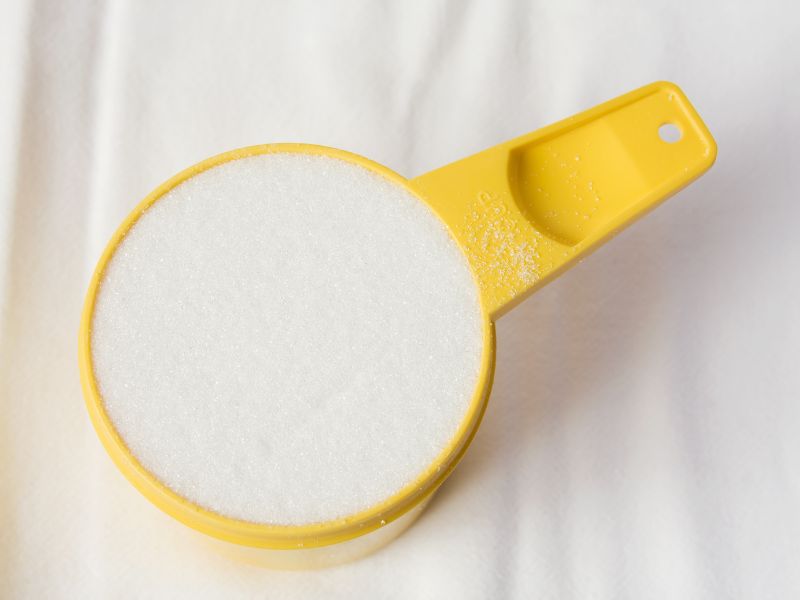
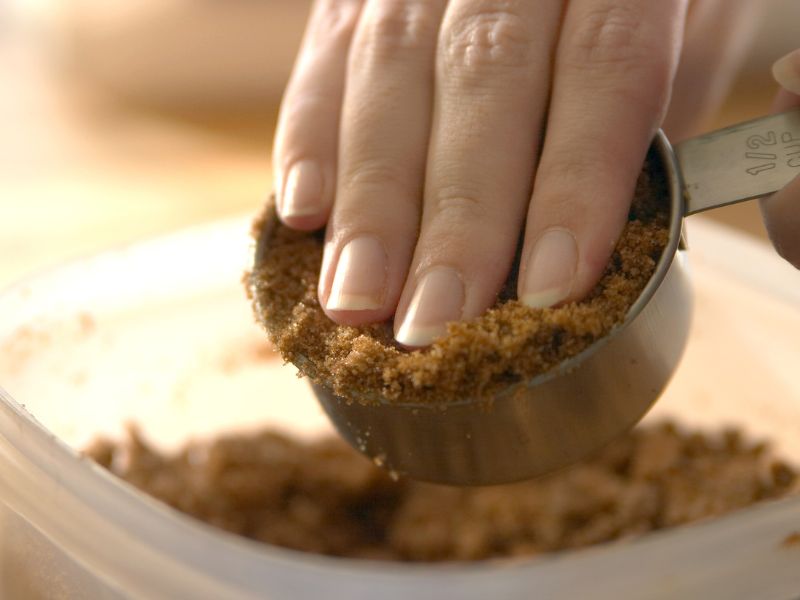
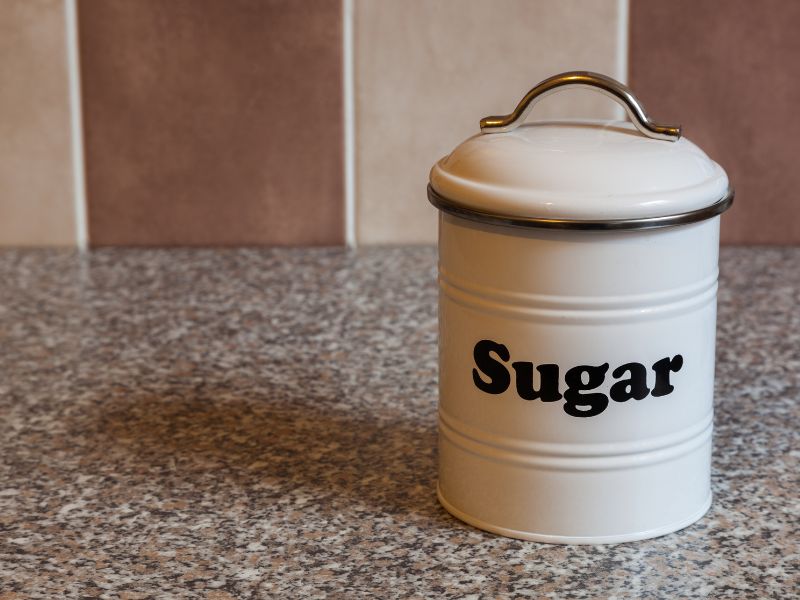
Navigating the sweet world of sugar in baking can sometimes be a bit tricky. But with a few handy tips up your sleeve, you can master the art of using sugar to perfection
Don’t Overdo the Sweetness
It’s tempting to add an extra spoonful or two, but moderation is key. Always measure sugar carefully. A little can go a long way. Remember, you can always sprinkle a bit more on top if needed, but once it’s in the mix, there’s no going back!
Swapping Sugars
Each type of sugar has its own personality. If you’re switching from white to brown sugar, expect a moister and chewier result. When using liquid sweeteners like honey, you might need to adjust the other wet ingredients in your recipe to keep the balance.
As an Amazon Affiliate, I may earn a commission from qualifying purchases.
Storing Sugar the Right Way
Keep your sugar fresh and ready for action. Store sugar in a cool, dry place. Humidity is sugar’s enemy and can cause it to clump. If your brown sugar turns hard, placing a slice of bread or apple in the container can help soften it again. This softener disc works great, too.
Understanding the Role of Sugar
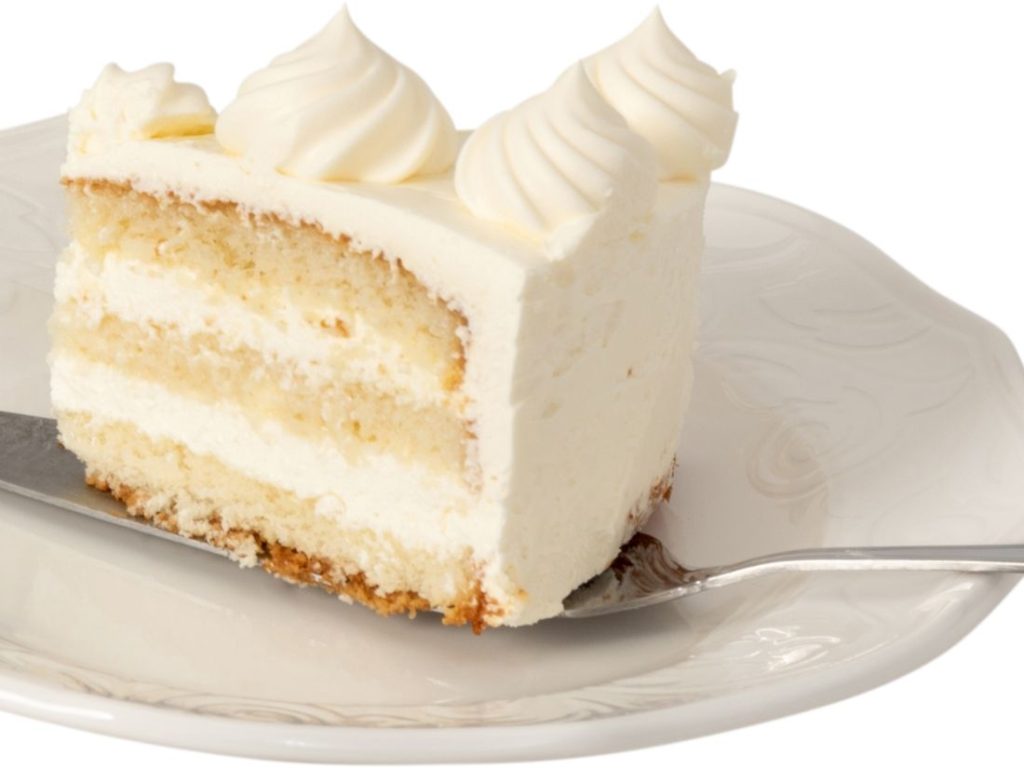
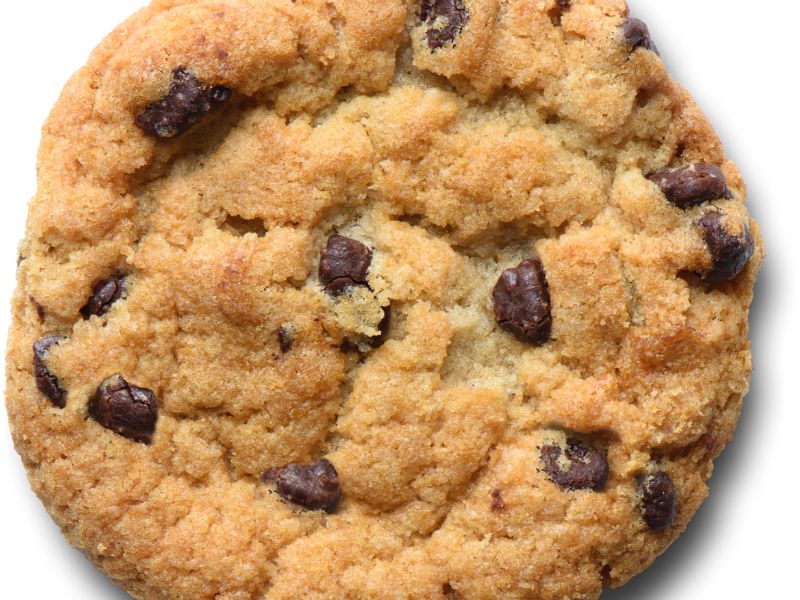
Sugar isn’t just about sweetness. It affects the texture, color, and even the shelf life of baked goods. Before reducing or increasing sugar in a recipe, think about how it might change the final product. Sometimes, a bit of experimentation is needed to get things just right. And maybe a new recipe as well.
Final Thoughts
We’ve seen how sugar is more than just a sweet touch in baking. It wears many hats – from being the reason our cookies have that perfect crunch to why our cakes are so fluffy. Realizing the importance of sugar in baking makes every bite of our treats even more special. So, the next time you enjoy a slice of pie or a muffin, take a moment to think about the magic sugar added to it. It truly is a baking superstar! I hope you found this article interesting and why sugar is important when it comes to baking. There are many alternatives to sugar when it comes to baking. Stay tuned!
Please leave me a comment below with your thoughts and experiences with sugar in baking.
And As Always
Keep On Baking!
Taianne
Share the love
FAQ Section: Unraveling the Sweet Mysteries of Sugar in Baking
Sugar’s role in baking is both fascinating and essential. Many of us have questions about how it works and what happens when we tweak its amounts in recipes. Here are some of the most commonly asked questions about the importance of sugar in baking:
Q: Does baking require sugar?
A: Not all baking requires sugar, but it’s often used for more than just sweetness. Sugar can affect the texture, color, and moisture of baked goods. While some recipes might work without it, others rely on sugar for taste and structure.
Q: What happens if you put less sugar in a cake?
A: Reducing sugar in a cake can lead to several changes. The cake might be less sweet, of course, but it can also be denser or drier. Sugar helps cakes rise and become fluffy, so using less can affect the cake’s overall texture and moistness.
Q: What happens if you don’t put sugar in cookies?
A: If you skip sugar in cookies, they won’t just be less sweet. Sugar helps cookies spread and turn golden brown. Without it, cookies might be more cake-like in texture and won’t have that classic golden color. They’ll also miss out on the caramelized flavor that sugar provides when baked.

I’m Taianne, the owner and operator behind We Are Baking. Baking my first cake at age 11 hooked me on creating sweet treats. Though my interest faded during childhood, it was rekindled when I married my apple pie-loving husband. I love trying new recipes, tweaking classics, and helping others learn the science and art of baking. I started We Are Baking to share tips, tricks, and favorite recipes I’ve discovered over the years. When not in the kitchen, I enjoy spending time with family and friends. My goal is to inspire others to embrace their creativity through baking. Feel free to contact me with any questions!
Taianne@wearebaking.com

